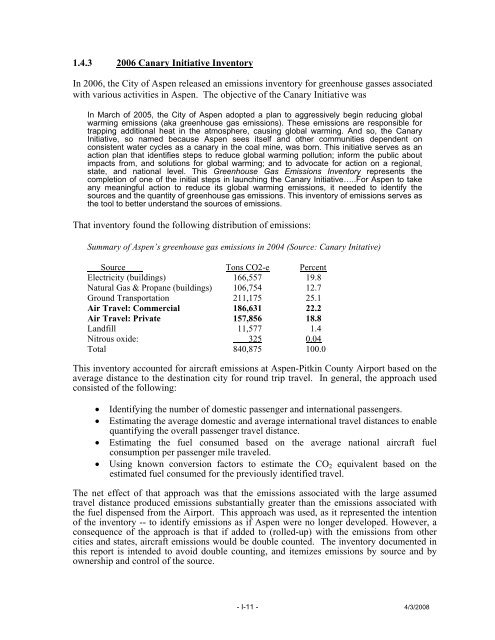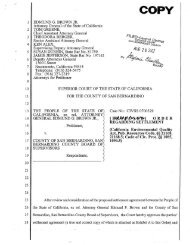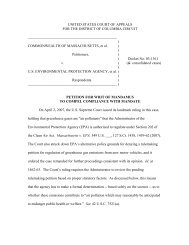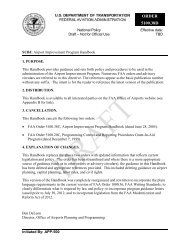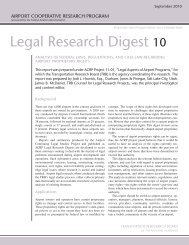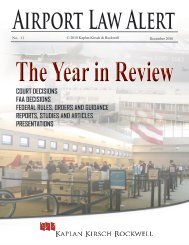Aspen-Pitkin County Airport Greenhouse Gas Emissions Inventory ...
Aspen-Pitkin County Airport Greenhouse Gas Emissions Inventory ...
Aspen-Pitkin County Airport Greenhouse Gas Emissions Inventory ...
Create successful ePaper yourself
Turn your PDF publications into a flip-book with our unique Google optimized e-Paper software.
1.4.3 2006 Canary Initiative <strong>Inventory</strong>In 2006, the City of <strong>Aspen</strong> released an emissions inventory for greenhouse gasses associatedwith various activities in <strong>Aspen</strong>. The objective of the Canary Initiative wasIn March of 2005, the City of <strong>Aspen</strong> adopted a plan to aggressively begin reducing globalwarming emissions (aka greenhouse gas emissions). These emissions are responsible fortrapping additional heat in the atmosphere, causing global warming. And so, the CanaryInitiative, so named because <strong>Aspen</strong> sees itself and other communities dependent onconsistent water cycles as a canary in the coal mine, was born. This initiative serves as anaction plan that identifies steps to reduce global warming pollution; inform the public aboutimpacts from, and solutions for global warming; and to advocate for action on a regional,state, and national level. This <strong>Greenhouse</strong> <strong>Gas</strong> <strong>Emissions</strong> <strong>Inventory</strong> represents thecompletion of one of the initial steps in launching the Canary Initiative…..For <strong>Aspen</strong> to takeany meaningful action to reduce its global warming emissions, it needed to identify thesources and the quantity of greenhouse gas emissions. This inventory of emissions serves asthe tool to better understand the sources of emissions.That inventory found the following distribution of emissions:Summary of <strong>Aspen</strong>’s greenhouse gas emissions in 2004 (Source: Canary Initative)Source Tons CO2-e PercentElectricity (buildings) 166,557 19.8Natural <strong>Gas</strong> & Propane (buildings) 106,754 12.7Ground Transportation 211,175 25.1Air Travel: Commercial 186,631 22.2Air Travel: Private 157,856 18.8Landfill 11,577 1.4Nitrous oxide: 325 0.04Total 840,875 100.0This inventory accounted for aircraft emissions at <strong>Aspen</strong>-<strong>Pitkin</strong> <strong>County</strong> <strong>Airport</strong> based on theaverage distance to the destination city for round trip travel. In general, the approach usedconsisted of the following:• Identifying the number of domestic passenger and international passengers.• Estimating the average domestic and average international travel distances to enablequantifying the overall passenger travel distance.• Estimating the fuel consumed based on the average national aircraft fuelconsumption per passenger mile traveled.• Using known conversion factors to estimate the CO 2 equivalent based on theestimated fuel consumed for the previously identified travel.The net effect of that approach was that the emissions associated with the large assumedtravel distance produced emissions substantially greater than the emissions associated withthe fuel dispensed from the <strong>Airport</strong>. This approach was used, as it represented the intentionof the inventory -- to identify emissions as if <strong>Aspen</strong> were no longer developed. However, aconsequence of the approach is that if added to (rolled-up) with the emissions from othercities and states, aircraft emissions would be double counted. The inventory documented inthis report is intended to avoid double counting, and itemizes emissions by source and byownership and control of the source.- I-11 - 4/3/2008


